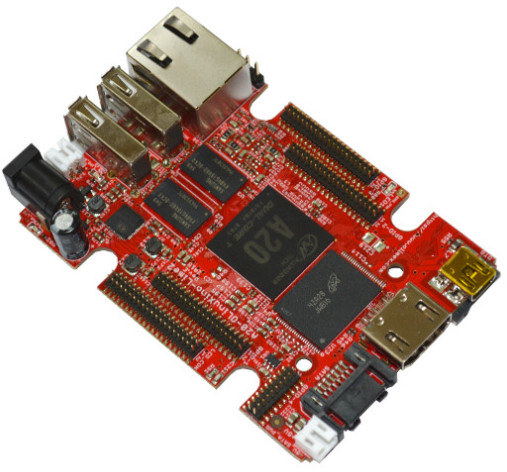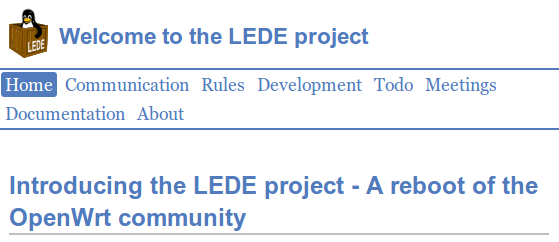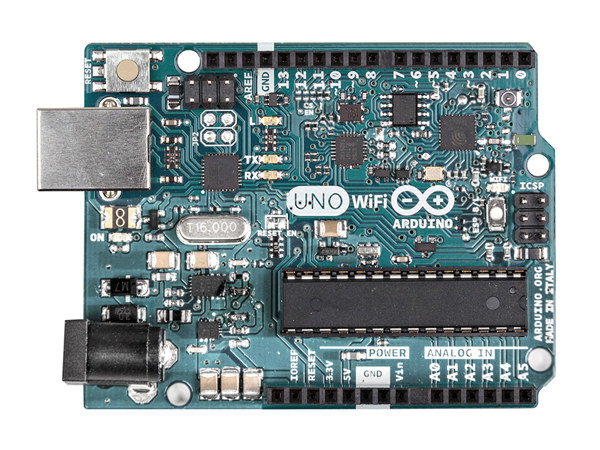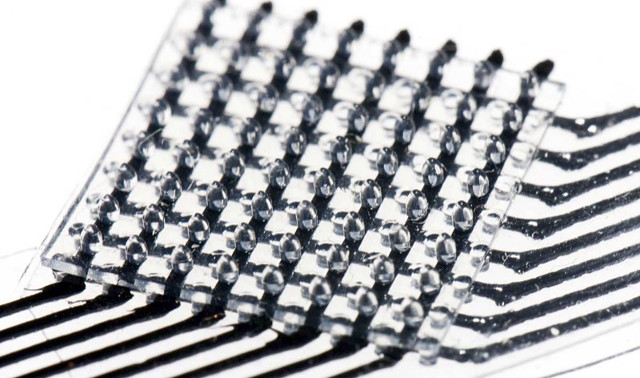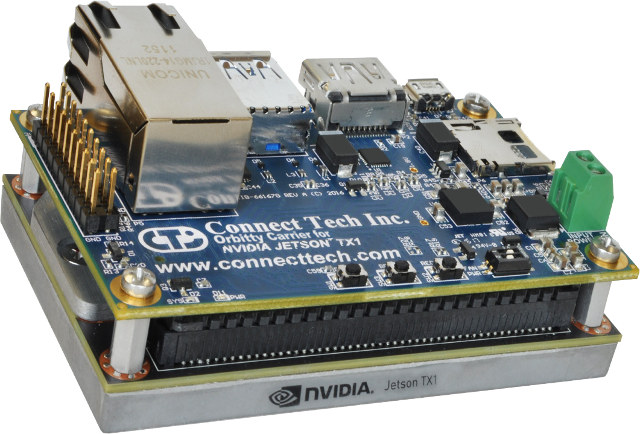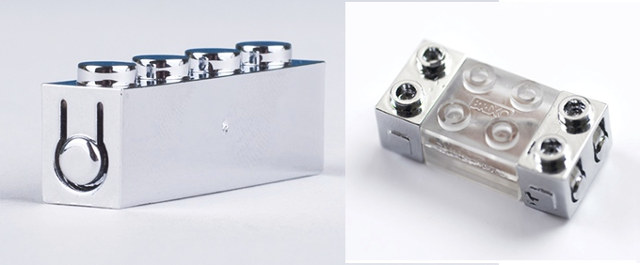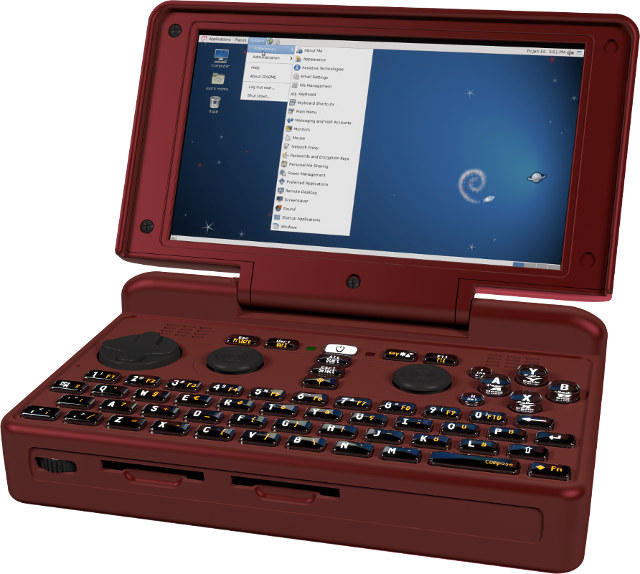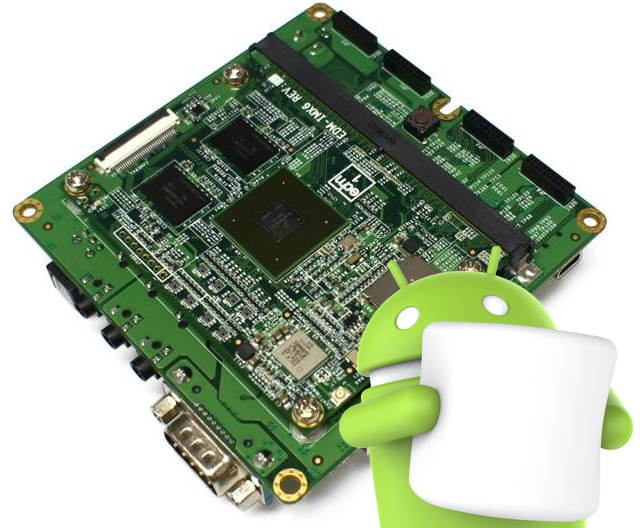A20-OLinuXino-LIME boards are the most popular development board sold by Olimex, likely thanks to reasonable pricing, and Allwinner A20 is one of the rare low cost processor to features an actual SATA interface and Gigabit Ethernet support. The company has now launched a new version A20-OLinuXino-LIME2-eMMC, based on A20-OLinuXino-LIME2-4GB, but replacing the NAND flash by an eMMC flash that should offer both better performance and reliability. A20-OLinuXino-LIME2-eMMC specifications: SoC – Allwinner A20 dual-core ARM Cortex-A7 CPU @ 1.0 GHz with dual-core Mali 400 GPU System Memory – 1GB DDR3 Storage – 4GB eMMC flash (Micron), SATA data and power connectors, micro SD slot, 2KB EEPROM for MAC address and custom data Connectivity – Gigabit Ethernet Video Output – HDMI up to 1080p60 USB – 2x USB 2.0 host ports with power control and current limiter, 1x micro USB-OTG with power control and current limiter Expansion – 160 GPIOs on four […]
LEDE (Linux Embedded Development Environment) Project is a Fork of OpenWrt
2016 appears to be the year of splits in open source communities with Kodi losing its main Android developer, LibreELEC being born out of disagreements within OpenELEC community, and now LEDE project, a fork of OpenWrt, has been created because some people are not satisfied with the way the project is managed, and now “includes a significant share of the most active members of the OpenWrt community”. LEDE, which stands for “Linux Embedded Development Environment” , has three stated goals: Building a great embedded Linux distribution with focus on stability and functionality. Having regular, predictable release cycles coupled with community provided device testing feedback. Establishing transparent decision processes with broad community participation and public meetings. You can find more on LEDE Project website, and the source code is available on the project’s git server:
|
1 |
git clone http://git.lede-project.org/source.git |
Thanks to Zoobab for the tip. Jean-Luc Aufranc (CNXSoft)Jean-Luc started CNX Software in 2010 as […]
Arduino UNO WiFi Board Combines Atmel ATmega328P MCU with ESP8266 SoC
Arduino.org (Arduino Srl) has launched Arduino UNO WiFi board, bringing Arduino (Atmel ATMega328P MCU) and ESP8266 together, and adding WiFi to the popular Arduino UNO board, while keeping all existing interfaces and headers. Arduino UNO WiFi (A000133) board specifications: Arduino part MCU – Atmel ATmega328 8-bit AVR MCU @ 16 MHz with 32 KB flash Memory, 2KB SRAM, 1KB EEPROM Digital I/O pins – 14, with 6 PWM and UART Analog Input Pins – 6 DC Current per I/0 – 40 mA Misc – Reset button Operating Voltage – 5 V ESP8266 part SoC – Expressif ESP8266EX Tensilica Xtensa LX106 processor @ 80 MHz Storage – 4MB SPI flash Connectivity – 802.11 b/g/n WiFi @ 2.4 GHz, wake up time < 2 ms; Antenna: PCB and IPX Misc – Bootloader button, WiFi LED Operating Voltage – 3.3 V Common specs USB – 1x USB device port Input Voltage – 5-12 […]
Tacterion Brings Capacitive Touch to Smart Clothing and Various Materials or Surfaces
With the advance of smartphones and other mobile devices, we’ve all been used to capacitive touch screens, but Tacterion, a German company born out of the Institute of Robotics and Mechatronics, at the German Aerospace Center, has designed “artificial skin” sensors that bring capacitive touch and other features to all sort of materials. Since the company wants to protect its IP they don’t disclosed much details about the inner working of their sensors: The patent protected technology is completely polymer-based. The technological principle are sensitive elements that measure based on transition resistivity: The more pressure is exerted on the polymer-based, electrically conducting elements, the lower the transition resistivity is, which is being measured continuously. Using our highly integrated high-speed readout electronics, a matrix of sensor elements can be combined to form sensitive surfaces. The readout electronics provides information regarding pressure and its distribution at a frame rate of 400 Hz. […]
Orbitty is a $175 Carrier Board for Nvidia Jetson TX1 System-on-Module
Connect Tech had already launched Astro carrier board for Nvidia Tegra X1 based Jetson TX1 CPU module, which they also integrated into Rosie Military Grade Embedded mini PC. Since them the Canadian company had also introduced a low cost “Elroy” carrier board , and more recently, a third cheaper baseboard called Orbitty selling for $175 and up, and including Gigabit Ethernet, USB 3.0 & 2.0 ports, HDMI, and more. Orbitty (ASG003) carrier board specifications: Compatibility – Nvidia Jetson TX1 system-on-module Storage – micro SD slot Video & Audio Output – 1x HDMI Connectivity – Gigabit Ethernet (RJ45) USB – 1x USB 3.0 port, 1x micro USB 2.0 OTG port Expansion Header – 20-pin header with 2x 3.3V UART, I2C, 4x GPIO, etc… Power Supply – 9 to 19V DC via terminal block Dimensions – 87 x 50mm Operating Temperature – -40°C to +85°C The carrier board targets robotics and unmanned […]
Brixo are LEGO Blocks for IoT and Robotics Applications (Crowdfunding)
Brixo, an Israeli start-up, has designed LEGO compatible blocks – also called Brixo – that conduct electricity, embed sensors, Bluetooth connectivity LED lights, or even motors. You simply use them as any LEGO blocks, but you can control them using light, sound, or your smartphone. There are three type of blocks Connector blocks – Made of chrome and used to connect the trigger blocks to the action blocks. They act like wires. Trigger blocks – They include Bluetooth connectivity, a proximity sensor, a light sensor, or/and a sound sensor Action blocks – LED lights or motors blocks They also have a smart battery block with Bluetooth LE designed for a 9V rectangular battery. Now get some of your existing LEGO accessories, and start having fun. The demo below shows the battery block on the right, some connector blocks, and various triggers and action blocks. You don’t even need any smartphone […]
Pyra Open Source Debian Handheld Computer & Game Console is Now Available for Pre-order
The development of Pyra open source portable gaming console started in 2014, and after over two years of hard work, the developers are now ready to take pre-order of the Texas Instruments OMAP 5 powered device running Debian Linux. Pyra handheld specifications have changed a little bit since the announcement two years ago: SoC – Texas Instruments OMAP 5432 SoC with 2x ARM Cortex-A15 @ 1.7Ghz with NEON SIMD, 2x ARM Cortex-M4, Imagination Technologies PowerVR SGX544-MP2 GPU for 3D graphic, and Vivante GC320 GPU for 2D graphics System Memory – 2GB or 4GB RAM Storage – 32 GB eMMC flash, 2x SDXC card slot, 1x internal micro SDXC card slot Display – 720p 5″ LCD with resistive touchscreen Video Output – micro HDMI Audio I/O – High-quality speakers, analog volume wheel, headset port, built-in Mic Gaming controls – D-Pad, 4x shoulder buttons, 6x face buttons, 2x accurate analog controls with […]
Wandboard Development Boards Get Android 6.0 Marshmallow Support
Wandboard development boards powered by Freescale i.MX6 Solo, Dual and Quad Cortex A9 processors were released over 3 years ago with Android 4.1 Jelly Bean. Contrary to many other boards that don’t get an updated version, Wandboard boards got support for Android 4.4 Kitkat, Android 5.x Lollipop, and now the community has recently released Android 6.0 Marshmallow. You can try the Android 6.0 SD card image as follows:
|
1 2 3 |
wget http://download.wandboard.org/wandboard-imx6/android-6.0/wandboard-all-android-6.0.1-sdcard-20160428.zip unzip wandboard-all-android-6.0.1-sdcard-20160428.zip sudo dd if=wandboard-android-6.0.1-ga-20160428-sdcard.img | pv | sudo dd of=/dev/sdX bs=16M |
Where /dev/sdX is the device for your SD card. If you can remember the first Jellybean release had separate images for each version of the board, but thanks to device tree implementation, a single image is now released with all three versions. The full source code is also available in a 5.0 GB tarball. Since Freescale, now NXP, i.MX6 processors will be available until November 2022, we can most probably expect a few more Android releases for the board. Jean-Luc Aufranc […]


